Breeding Strategies for Mares Inseminated with Frozen Semen
March 21, 2022
Posted by
Paul Loomis in
Breeding With Frozen Semen
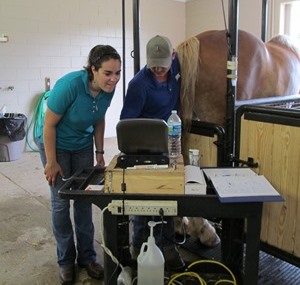 Timed artificial insemination (AI), programmed AI, one dose, two doses, deep horn insemination…what’s best for your mare? With the increased use of frozen semen and the trend towards commodity sales (by the dose with no guarantee) veterinarians have developed a variety of strategies when managing mares being bred with frozen semen. In this article, we discuss several options and which ones might be most appropriate for your situation.
Timed artificial insemination (AI), programmed AI, one dose, two doses, deep horn insemination…what’s best for your mare? With the increased use of frozen semen and the trend towards commodity sales (by the dose with no guarantee) veterinarians have developed a variety of strategies when managing mares being bred with frozen semen. In this article, we discuss several options and which ones might be most appropriate for your situation.
Anti-sperm Antibodies: A Possible Source of Subfertility in the Stallion
February 13, 2022
Posted by
Paul Loomis in
Stallion Management
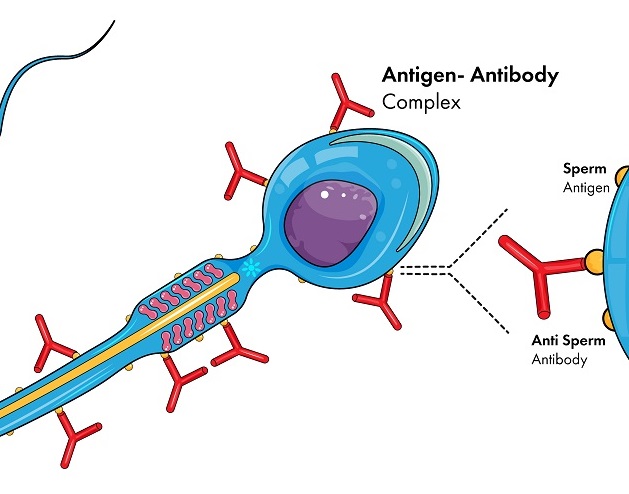 Every stallion owner’s worst nightmare: 2 months into the breeding season and your stallion is not settling his mares. His bloodlines are impeccable, and he had a great start to his performance career so this year you offered to stand him at stud to outside mares, and the response has been great, 40 mares booked in his first season! As a responsible and experienced stallion owner, you had a breeding soundness examination done and he passed with flying colors; good testicular size, good sperm production, good motility, concentration and morphology and his semen responded very well in a 48-hour cooled semen trial. He should be able to handle a book of 40 mares without problems.
Every stallion owner’s worst nightmare: 2 months into the breeding season and your stallion is not settling his mares. His bloodlines are impeccable, and he had a great start to his performance career so this year you offered to stand him at stud to outside mares, and the response has been great, 40 mares booked in his first season! As a responsible and experienced stallion owner, you had a breeding soundness examination done and he passed with flying colors; good testicular size, good sperm production, good motility, concentration and morphology and his semen responded very well in a 48-hour cooled semen trial. He should be able to handle a book of 40 mares without problems.
The Major Causes of Damage to Sperm During Freezing…water and salts and ice, oh my!
November 06, 2017
Posted by
Paul Loomis in
Frozen Semen
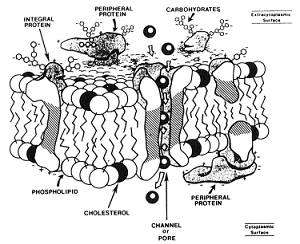 I have always been fascinated by the exquisite design of biological systems. The more we humans understand about biology, the more we realize we don’t know. The process of mammalian fertilization is one of these complex biological systems that in nature requires the proper coordination of so many factors ranging from the behavior of male and female to biochemical changes at the cellular and molecular level. Defined as: “A process in sexual reproduction that involves the union of male (sperm) and female (ovum) gametes (each with a single, haploid set of chromosomes) to produce a diploid zygote”, fertilization requires that functionally viable sperm, at the right stage of maturity, are present in the oviduct of the mare during a brief window of time when a functionally viable oocyte is present.
I have always been fascinated by the exquisite design of biological systems. The more we humans understand about biology, the more we realize we don’t know. The process of mammalian fertilization is one of these complex biological systems that in nature requires the proper coordination of so many factors ranging from the behavior of male and female to biochemical changes at the cellular and molecular level. Defined as: “A process in sexual reproduction that involves the union of male (sperm) and female (ovum) gametes (each with a single, haploid set of chromosomes) to produce a diploid zygote”, fertilization requires that functionally viable sperm, at the right stage of maturity, are present in the oviduct of the mare during a brief window of time when a functionally viable oocyte is present.
Seminal Plasma: The Good, The Bad and The Ugly
May 09, 2017
Posted by
Paul Loomis in
Stallion Management
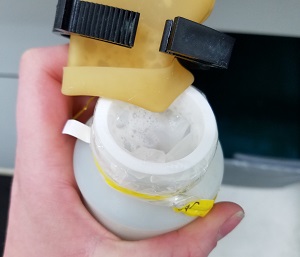 To understand why seminal plasma is beneficial in some situations and potentially harmful in others we must first review what it is, where it comes from and what we think are its roles in reproduction. The term seminal plasma refers to the fluid portion of ejaculated semen in which the spermatozoa are suspended. This fluid consists of secretions from the accessory sex glands in the stallion’s reproductive tract. These include the ampullae, the vesicular glands (seminal vesicles), the prostate gland and the bulbourethral glands (figure 1).
To understand why seminal plasma is beneficial in some situations and potentially harmful in others we must first review what it is, where it comes from and what we think are its roles in reproduction. The term seminal plasma refers to the fluid portion of ejaculated semen in which the spermatozoa are suspended. This fluid consists of secretions from the accessory sex glands in the stallion’s reproductive tract. These include the ampullae, the vesicular glands (seminal vesicles), the prostate gland and the bulbourethral glands (figure 1).
Should Frozen-Thawed Semen Be Diluted Prior to Insemination?
February 26, 2016
Posted by
Paul Loomis in
Frozen Semen
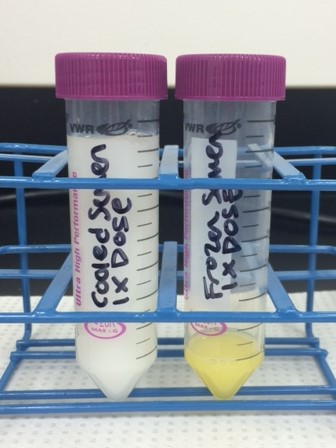 For veterinarians and technicians accustomed to inseminating fresh or cooled semen in large (20-60 ml) volumes, the idea of inseminating 0.5 to 4 ml of thawed frozen semen can be intimidating. During processing, frozen semen is concentrated by centrifugation and is typically packaged in small 0.5 ml straws at a sperm concentration that is often as much as 5 to 10 times greater than cooled semen. Therefore, a full insemination dose of frozen semen may be contained in just a few milliliters of volume whereas the same number of sperm extended for cooling may require 30-40 ml of volume.
For veterinarians and technicians accustomed to inseminating fresh or cooled semen in large (20-60 ml) volumes, the idea of inseminating 0.5 to 4 ml of thawed frozen semen can be intimidating. During processing, frozen semen is concentrated by centrifugation and is typically packaged in small 0.5 ml straws at a sperm concentration that is often as much as 5 to 10 times greater than cooled semen. Therefore, a full insemination dose of frozen semen may be contained in just a few milliliters of volume whereas the same number of sperm extended for cooling may require 30-40 ml of volume.
Quality Control is at the Core of the SBS Difference
October 31, 2014
Posted by
Paul Loomis in
Frozen Semen
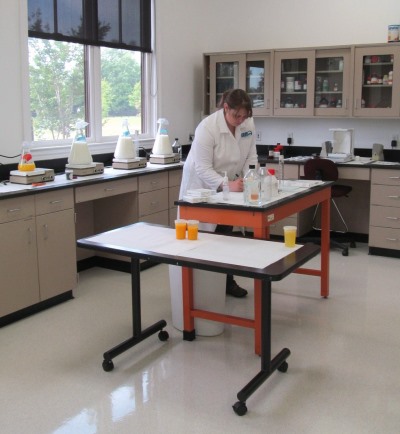 The SBS network of affiliates is the acknowledged leader in the field of cryopreservation of equine semen. Each year we freeze thousands of ejaculates equating to tens of thousands of doses. When SBS was founded the company leadership made a commitment to quality of the finished product above all else. We wanted to put technology to use to help grow the equine frozen semen AI industry in the most responsible manner possible. It was clear early on that one of the major factors limiting the application of frozen semen in the horse industry was inconsistent quality of the product being put on the market. Breeders and veterinarians experienced frustration with attempts to use expensive semen that in many cases was of very poor quality. We knew that in order for breeders to realize the full potential of frozen semen technology they would have to be convinced that by applying strict standards for quality, frozen semen could be produced to achieve results similar to cooled semen. We also knew that these results would have to be produced in an efficient and economical way. Quality became the cornerstone upon which we would build our business.
The SBS network of affiliates is the acknowledged leader in the field of cryopreservation of equine semen. Each year we freeze thousands of ejaculates equating to tens of thousands of doses. When SBS was founded the company leadership made a commitment to quality of the finished product above all else. We wanted to put technology to use to help grow the equine frozen semen AI industry in the most responsible manner possible. It was clear early on that one of the major factors limiting the application of frozen semen in the horse industry was inconsistent quality of the product being put on the market. Breeders and veterinarians experienced frustration with attempts to use expensive semen that in many cases was of very poor quality. We knew that in order for breeders to realize the full potential of frozen semen technology they would have to be convinced that by applying strict standards for quality, frozen semen could be produced to achieve results similar to cooled semen. We also knew that these results would have to be produced in an efficient and economical way. Quality became the cornerstone upon which we would build our business.
Heat Stress and Equine Reproduction
September 09, 2014
Posted by
Paul Loomis in
Stallion Management
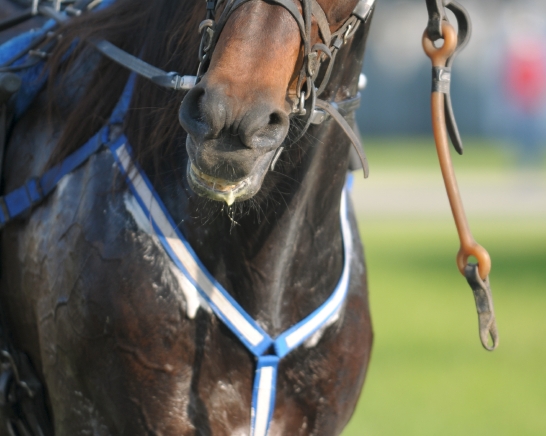 During those dog days of late summer and the end of the breeding season, most of us who work in equine reproduction are ready for a break. You are left with those difficult mares that didn’t settle earlier in the season and stallions that may be growing tired of breeding. Mares may not cycle as predictably or conceive as readily and stallions may be tougher to collect or exhibit a decrease in semen quality. One of the factors that can contribute to these problems is heat stress. As ambient temperatures rise, stallions and mares may experience disruptions to normal reproductive function as a result. This article will briefly describe some of the effects of heat stress on mare and stallion reproductive function.
During those dog days of late summer and the end of the breeding season, most of us who work in equine reproduction are ready for a break. You are left with those difficult mares that didn’t settle earlier in the season and stallions that may be growing tired of breeding. Mares may not cycle as predictably or conceive as readily and stallions may be tougher to collect or exhibit a decrease in semen quality. One of the factors that can contribute to these problems is heat stress. As ambient temperatures rise, stallions and mares may experience disruptions to normal reproductive function as a result. This article will briefly describe some of the effects of heat stress on mare and stallion reproductive function.
Splitting Doses of Frozen Semen
May 06, 2014
Posted by
Paul Loomis in
Breeding With Frozen Semen
“I just purchased one very expensive dose of frozen semen from this incredible stallion. Is it OK to split the dose and breed two mares to try and get two foals?” or “The stallion owner only provides one dose per heat cycle and my vet would like to use a timed insemination protocol. Is it OK to split the dose and inseminate twice on the heat cycle?” At SBS we have heard these questions or some variation of them many times over the years. The answers are not simple ones. This blog article will follow up on two previous blogs that are also important in understanding the issue. See the recent blogs What Exactly is a Dose of Frozen Semen? and What is Progressive Motility?
What Is Progressive Motility?
September 25, 2013
Posted by
Paul Loomis in
Frozen Semen
The most commonly used measure of semen quality is sperm motility, specifically “progressive motility”. But what exactly does that mean and how is it determined? The minimum post-thaw “progressive motility” generally recommended for commercial distribution of frozen semen is 30% to 35%. This article will address some of the factors that can affect the assessment of sperm motility as well as the various problems associated with techniques used for determining “progressive motility”.
Processing Equine Semen for Cooled Transport
May 22, 2013
Posted by
Paul Loomis in
Stallion Management
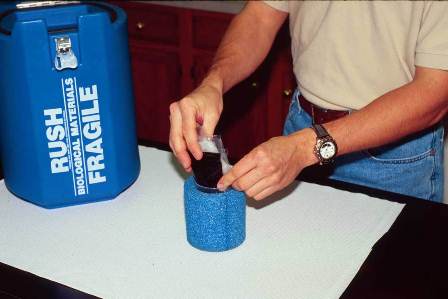 The advent of transported cooled semen significantly altered the logistics of the equine breeding industry. Shipping semen to mares rather than mares to stallions is incredibly more convenient; however it has resulted in the need for increased proficiency in semen processing techniques on the part of the stallion manager and expertise in reproductive technology and artificial insemination on the part of the field practitioner managing the mare. From the perspective of the stallion manager there are a number of factors that can influence the success of cooled transported semen such as stallion collection management, semen handling, extender composition, dilution rate, cooling rate, calculation of insemination dose and transport device. Our blog article this month will address the basic techniques for proper collection, evaluation and processing of stallion semen for cooled transport.
The advent of transported cooled semen significantly altered the logistics of the equine breeding industry. Shipping semen to mares rather than mares to stallions is incredibly more convenient; however it has resulted in the need for increased proficiency in semen processing techniques on the part of the stallion manager and expertise in reproductive technology and artificial insemination on the part of the field practitioner managing the mare. From the perspective of the stallion manager there are a number of factors that can influence the success of cooled transported semen such as stallion collection management, semen handling, extender composition, dilution rate, cooling rate, calculation of insemination dose and transport device. Our blog article this month will address the basic techniques for proper collection, evaluation and processing of stallion semen for cooled transport.
It Only Takes One.....Right?
April 23, 2013
Posted by
Paul Loomis in
Frozen Semen
How many sperm does it take to get a mare pregnant?
1
billion?...500 million?... One? Actually, any one of those answers could
be correct under certain conditions. The only way to really answer that
question is... "it depends". Fertilization is a complex process
requiring that both the sperm and egg possess a myriad of functional
attributes expressed at the right time and in the right place. A motile
sperm is not necessarily a fertile sperm. So, how many sperm must be
deposited in the mare for "acceptable" fertility? It would seem that
this would be the logical basis for determining sperm numbers in an
insemination dose for commercially distributed semen. To achieve the
goals of both the mare and stallion owner it is necessary for each dose
of semen to contain sufficient numbers of functionally competent sperm
to maximize the probability of conception. The relationship between
sperm number and fertility is expressed as a typical dose response curve
(see figure1). However, the slope of the curve and the maximum level of
fertility are different for individual stallions.
Collecting Semen from the Young Stallion
April 23, 2013
Posted by
Paul Loomis in
Stallion Management
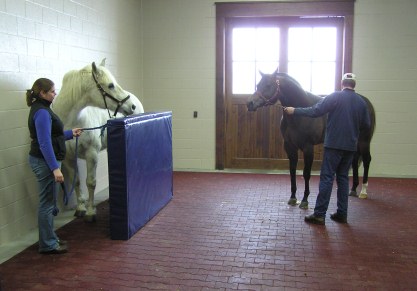 At SBS, we are often presented with young stallions for semen collection and evaluation. There are a variety of reasons that stallion owners want to have semen collected from their young stallions including; 1) evaluation of sperm production and quality to assess suitability as a breeding stallion, 2) training to collect on a phantom with an artificial vagina in preparation for a breeding career and 3) to collect and preserve semen from a young stallion prior to castration or starting a performance career.
At SBS, we are often presented with young stallions for semen collection and evaluation. There are a variety of reasons that stallion owners want to have semen collected from their young stallions including; 1) evaluation of sperm production and quality to assess suitability as a breeding stallion, 2) training to collect on a phantom with an artificial vagina in preparation for a breeding career and 3) to collect and preserve semen from a young stallion prior to castration or starting a performance career.
The Economics of Cooled and Frozen Semen
October 23, 2012
Posted by
Paul Loomis in
Frozen Semen
There are a number of misconceptions about frozen semen that are pervasive in the horse breeding community and one of them relates to the relative costs of frozen vs. cooled semen. We have heard horror stories of mare owners spending thousands of dollars purchasing and then trying to get mares in foal with frozen semen only to end the season with an open mare. Then there are also stories of stallion owners investing large sums of money freezing semen that is of poor quality or doesn’t result in pregnancies. Many of these nightmares are the result of lack of quality control on the semen that is put on the commercial market and/or proficiency of the lab or technician that is freezing the semen. Poor quality semen, whether fresh, cooled or frozen will result in wasted money, empty mares and unhappy breeders. This article will present objective information on the true costs of using frozen semen so that stallion and mare owners can make informed decisions.
Should the US Adopt Stricter Controls on Cooled and Frozen Semen Production Facilities?
May 22, 2012
Posted by
Paul Loomis in
Stallion Management
In the United States there are very few regulations concerning the collection, processing, distribution and insemination of stallion semen. Any owner who can manage to extract semen from his or her stallion can without any prior training, experience, certification or license, sell semen from that stallion without restriction of any kind. There are only a few individual states that require certain testing for diseases potentially transmitted in semen but in most cases there is no requirement for such screening within the breeding population in the U.S. The USDA has regulations concerning the importation of semen and breeding animals into the U.S. from other countries but there is no USDA oversight to regulate the horse breeding industry within the borders of the country. This is also true in many other countries as well.
AAEP Reproduction Review
November 30, 2011
Posted by
Paul Loomis in
Industry News
 The 57th Annual Convention of the American Association of Equine Practitioners was held November 18-22 in San Antonio, Texas. Paul Loomis attending the conference and prepared this brief summary of a few of the interesting papers presented in the area of equine reproduction.
The 57th Annual Convention of the American Association of Equine Practitioners was held November 18-22 in San Antonio, Texas. Paul Loomis attending the conference and prepared this brief summary of a few of the interesting papers presented in the area of equine reproduction.
Please Help CSU Rebuild Equine Reproduction Lab
August 03, 2011
Posted by
Paul Loomis in
_Archived Articles
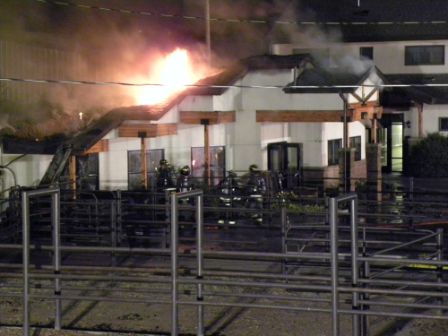 As many of you may have heard, the Equine Reproduction Laboratory at Colorado State University was destroyed by fire last week. The following is excerpted from a letter on the CSU website from Professor Colin Clay, Head of the Department of Biomedical Sciences, in the Animal Reproduction and Biotechnology Laboratory at CSU.
As many of you may have heard, the Equine Reproduction Laboratory at Colorado State University was destroyed by fire last week. The following is excerpted from a letter on the CSU website from Professor Colin Clay, Head of the Department of Biomedical Sciences, in the Animal Reproduction and Biotechnology Laboratory at CSU.
Questions Every Mare Owner Should Ask Before Breeding With Frozen Semen
April 11, 2011
Posted by
Paul Loomis in
Breeding with Frozen Semen
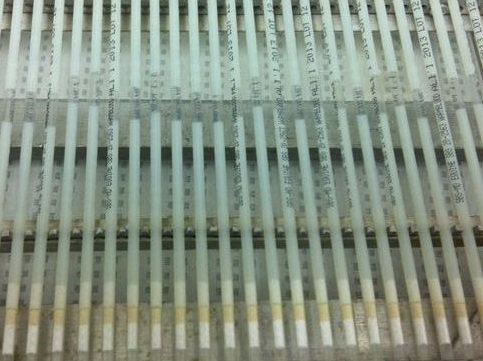 Frozen semen offers many advantages to mare owners but it is important to understand that not all frozen semen is the same. You can achieve excellent results with frozen semen IF the semen is of good quality, is provided in adequate numbers and has been processed, stored and shipped properly. All too often mare owners and veterinarians have been disappointed with the results they obtained with frozen semen that may not have been processed properly or was distributed without adhering to strict standards for quality control. The best way for a mare owner to ensure success is to breed to a stallion whose owner or agent is willing to stand behind the product and offer a pregnancy guarantee, just like they would with cooled semen. If that is not the case then make sure that the semen was collected and frozen by a reputable, professional laboratory and that you can obtain objective information about the semen quality. Here are some important questions to ask the stallion owner or semen agent before you sign a contract.
Frozen semen offers many advantages to mare owners but it is important to understand that not all frozen semen is the same. You can achieve excellent results with frozen semen IF the semen is of good quality, is provided in adequate numbers and has been processed, stored and shipped properly. All too often mare owners and veterinarians have been disappointed with the results they obtained with frozen semen that may not have been processed properly or was distributed without adhering to strict standards for quality control. The best way for a mare owner to ensure success is to breed to a stallion whose owner or agent is willing to stand behind the product and offer a pregnancy guarantee, just like they would with cooled semen. If that is not the case then make sure that the semen was collected and frozen by a reputable, professional laboratory and that you can obtain objective information about the semen quality. Here are some important questions to ask the stallion owner or semen agent before you sign a contract.
 Timed artificial insemination (AI), programmed AI, one dose, two doses, deep horn insemination…what’s best for your mare? With the increased use of frozen semen and the trend towards commodity sales (by the dose with no guarantee) veterinarians have developed a variety of strategies when managing mares being bred with frozen semen. In this article, we discuss several options and which ones might be most appropriate for your situation.
Timed artificial insemination (AI), programmed AI, one dose, two doses, deep horn insemination…what’s best for your mare? With the increased use of frozen semen and the trend towards commodity sales (by the dose with no guarantee) veterinarians have developed a variety of strategies when managing mares being bred with frozen semen. In this article, we discuss several options and which ones might be most appropriate for your situation. I have always been fascinated by the exquisite design of biological systems. The more we humans understand about biology, the more we realize we don’t know. The process of mammalian fertilization is one of these complex biological systems that in nature requires the proper coordination of so many factors ranging from the behavior of male and female to biochemical changes at the cellular and molecular level. Defined as: “A process in sexual reproduction that involves the union of male (sperm) and female (ovum) gametes (each with a single, haploid set of chromosomes) to produce a diploid zygote”, fertilization requires that functionally viable sperm, at the right stage of maturity, are present in the oviduct of the mare during a brief window of time when a functionally viable oocyte is present.
I have always been fascinated by the exquisite design of biological systems. The more we humans understand about biology, the more we realize we don’t know. The process of mammalian fertilization is one of these complex biological systems that in nature requires the proper coordination of so many factors ranging from the behavior of male and female to biochemical changes at the cellular and molecular level. Defined as: “A process in sexual reproduction that involves the union of male (sperm) and female (ovum) gametes (each with a single, haploid set of chromosomes) to produce a diploid zygote”, fertilization requires that functionally viable sperm, at the right stage of maturity, are present in the oviduct of the mare during a brief window of time when a functionally viable oocyte is present. Every stallion owner’s worst nightmare: 2 months into the breeding season and your stallion is not settling his mares. His bloodlines are impeccable, and he had a great start to his performance career so this year you offered to stand him at stud to outside mares, and the response has been great, 40 mares booked in his first season! As a responsible and experienced stallion owner, you had a breeding soundness examination done and he passed with flying colors; good testicular size, good sperm production, good motility, concentration and morphology and his semen responded very well in a 48-hour cooled semen trial. He should be able to handle a book of 40 mares without problems.
Every stallion owner’s worst nightmare: 2 months into the breeding season and your stallion is not settling his mares. His bloodlines are impeccable, and he had a great start to his performance career so this year you offered to stand him at stud to outside mares, and the response has been great, 40 mares booked in his first season! As a responsible and experienced stallion owner, you had a breeding soundness examination done and he passed with flying colors; good testicular size, good sperm production, good motility, concentration and morphology and his semen responded very well in a 48-hour cooled semen trial. He should be able to handle a book of 40 mares without problems. To understand why seminal plasma is beneficial in some situations and potentially harmful in others we must first review what it is, where it comes from and what we think are its roles in reproduction. The term seminal plasma refers to the fluid portion of ejaculated semen in which the spermatozoa are suspended. This fluid consists of secretions from the accessory sex glands in the stallion’s reproductive tract. These include the ampullae, the vesicular glands (seminal vesicles), the prostate gland and the bulbourethral glands (figure 1).
To understand why seminal plasma is beneficial in some situations and potentially harmful in others we must first review what it is, where it comes from and what we think are its roles in reproduction. The term seminal plasma refers to the fluid portion of ejaculated semen in which the spermatozoa are suspended. This fluid consists of secretions from the accessory sex glands in the stallion’s reproductive tract. These include the ampullae, the vesicular glands (seminal vesicles), the prostate gland and the bulbourethral glands (figure 1). For veterinarians and technicians accustomed to inseminating fresh or cooled semen in large (20-60 ml) volumes, the idea of inseminating 0.5 to 4 ml of thawed frozen semen can be intimidating. During processing, frozen semen is concentrated by centrifugation and is typically packaged in small 0.5 ml straws at a sperm concentration that is often as much as 5 to 10 times greater than cooled semen. Therefore, a full insemination dose of frozen semen may be contained in just a few milliliters of volume whereas the same number of sperm extended for cooling may require 30-40 ml of volume.
For veterinarians and technicians accustomed to inseminating fresh or cooled semen in large (20-60 ml) volumes, the idea of inseminating 0.5 to 4 ml of thawed frozen semen can be intimidating. During processing, frozen semen is concentrated by centrifugation and is typically packaged in small 0.5 ml straws at a sperm concentration that is often as much as 5 to 10 times greater than cooled semen. Therefore, a full insemination dose of frozen semen may be contained in just a few milliliters of volume whereas the same number of sperm extended for cooling may require 30-40 ml of volume. The SBS network of affiliates is the acknowledged leader in the field of cryopreservation of equine semen. Each year we freeze thousands of ejaculates equating to tens of thousands of doses. When SBS was founded the company leadership made a commitment to quality of the finished product above all else. We wanted to put technology to use to help grow the equine frozen semen AI industry in the most responsible manner possible. It was clear early on that one of the major factors limiting the application of frozen semen in the horse industry was inconsistent quality of the product being put on the market. Breeders and veterinarians experienced frustration with attempts to use expensive semen that in many cases was of very poor quality. We knew that in order for breeders to realize the full potential of frozen semen technology they would have to be convinced that by applying strict standards for quality, frozen semen could be produced to achieve results similar to cooled semen. We also knew that these results would have to be produced in an efficient and economical way. Quality became the cornerstone upon which we would build our business.
The SBS network of affiliates is the acknowledged leader in the field of cryopreservation of equine semen. Each year we freeze thousands of ejaculates equating to tens of thousands of doses. When SBS was founded the company leadership made a commitment to quality of the finished product above all else. We wanted to put technology to use to help grow the equine frozen semen AI industry in the most responsible manner possible. It was clear early on that one of the major factors limiting the application of frozen semen in the horse industry was inconsistent quality of the product being put on the market. Breeders and veterinarians experienced frustration with attempts to use expensive semen that in many cases was of very poor quality. We knew that in order for breeders to realize the full potential of frozen semen technology they would have to be convinced that by applying strict standards for quality, frozen semen could be produced to achieve results similar to cooled semen. We also knew that these results would have to be produced in an efficient and economical way. Quality became the cornerstone upon which we would build our business. During those dog days of late summer and the end of the breeding season, most of us who work in equine reproduction are ready for a break. You are left with those difficult mares that didn’t settle earlier in the season and stallions that may be growing tired of breeding. Mares may not cycle as predictably or conceive as readily and stallions may be tougher to collect or exhibit a decrease in semen quality. One of the factors that can contribute to these problems is heat stress. As ambient temperatures rise, stallions and mares may experience disruptions to normal reproductive function as a result. This article will briefly describe some of the effects of heat stress on mare and stallion reproductive function.
During those dog days of late summer and the end of the breeding season, most of us who work in equine reproduction are ready for a break. You are left with those difficult mares that didn’t settle earlier in the season and stallions that may be growing tired of breeding. Mares may not cycle as predictably or conceive as readily and stallions may be tougher to collect or exhibit a decrease in semen quality. One of the factors that can contribute to these problems is heat stress. As ambient temperatures rise, stallions and mares may experience disruptions to normal reproductive function as a result. This article will briefly describe some of the effects of heat stress on mare and stallion reproductive function. The advent of transported cooled semen significantly altered the logistics of the equine breeding industry. Shipping semen to mares rather than mares to stallions is incredibly more convenient; however it has resulted in the need for increased proficiency in semen processing techniques on the part of the stallion manager and expertise in reproductive technology and artificial insemination on the part of the field practitioner managing the mare. From the perspective of the stallion manager there are a number of factors that can influence the success of cooled transported semen such as stallion collection management, semen handling, extender composition, dilution rate, cooling rate, calculation of insemination dose and transport device. Our blog article this month will address the basic techniques for proper collection, evaluation and processing of stallion semen for cooled transport.
The advent of transported cooled semen significantly altered the logistics of the equine breeding industry. Shipping semen to mares rather than mares to stallions is incredibly more convenient; however it has resulted in the need for increased proficiency in semen processing techniques on the part of the stallion manager and expertise in reproductive technology and artificial insemination on the part of the field practitioner managing the mare. From the perspective of the stallion manager there are a number of factors that can influence the success of cooled transported semen such as stallion collection management, semen handling, extender composition, dilution rate, cooling rate, calculation of insemination dose and transport device. Our blog article this month will address the basic techniques for proper collection, evaluation and processing of stallion semen for cooled transport. The 57th Annual Convention of the American Association of Equine Practitioners was held November 18-22 in San Antonio, Texas. Paul Loomis attending the conference and prepared this brief summary of a few of the interesting papers presented in the area of equine reproduction.
The 57th Annual Convention of the American Association of Equine Practitioners was held November 18-22 in San Antonio, Texas. Paul Loomis attending the conference and prepared this brief summary of a few of the interesting papers presented in the area of equine reproduction. As many of you may have heard, the Equine Reproduction Laboratory at Colorado State University was destroyed by fire last week. The following is excerpted from a letter on the CSU website from Professor Colin Clay, Head of the Department of Biomedical Sciences, in the Animal Reproduction and Biotechnology Laboratory at CSU.
As many of you may have heard, the Equine Reproduction Laboratory at Colorado State University was destroyed by fire last week. The following is excerpted from a letter on the CSU website from Professor Colin Clay, Head of the Department of Biomedical Sciences, in the Animal Reproduction and Biotechnology Laboratory at CSU. Frozen semen offers many advantages to mare owners but it is important to understand that not all frozen semen is the same. You can achieve excellent results with frozen semen IF the semen is of good quality, is provided in adequate numbers and has been processed, stored and shipped properly. All too often mare owners and veterinarians have been disappointed with the results they obtained with frozen semen that may not have been processed properly or was distributed without adhering to strict standards for quality control. The best way for a mare owner to ensure success is to breed to a stallion whose owner or agent is willing to stand behind the product and offer a pregnancy guarantee, just like they would with cooled semen. If that is not the case then make sure that the semen was collected and frozen by a reputable, professional laboratory and that you can obtain objective information about the semen quality. Here are some important questions to ask the stallion owner or semen agent before you sign a contract.
Frozen semen offers many advantages to mare owners but it is important to understand that not all frozen semen is the same. You can achieve excellent results with frozen semen IF the semen is of good quality, is provided in adequate numbers and has been processed, stored and shipped properly. All too often mare owners and veterinarians have been disappointed with the results they obtained with frozen semen that may not have been processed properly or was distributed without adhering to strict standards for quality control. The best way for a mare owner to ensure success is to breed to a stallion whose owner or agent is willing to stand behind the product and offer a pregnancy guarantee, just like they would with cooled semen. If that is not the case then make sure that the semen was collected and frozen by a reputable, professional laboratory and that you can obtain objective information about the semen quality. Here are some important questions to ask the stallion owner or semen agent before you sign a contract.
